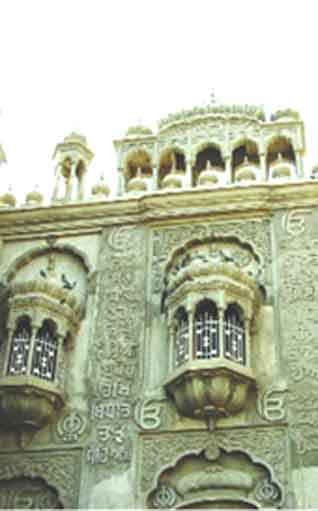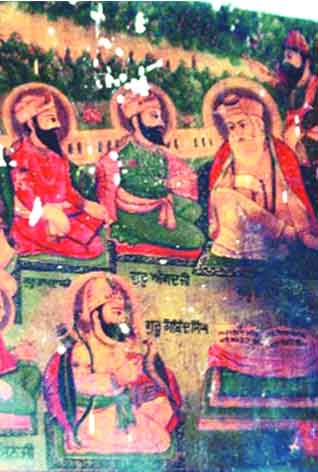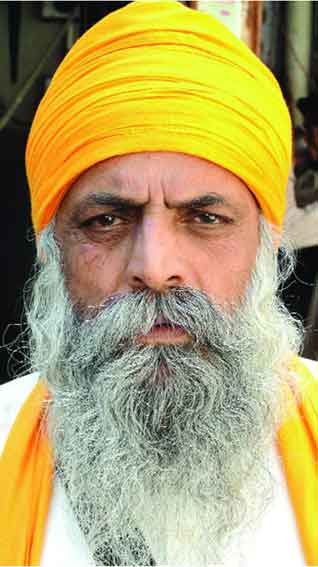History
The Sikhs of Sindh
ZULFIQAR ALI KALHORO
Many followers of the Sikh religion established darbars, tikanas, and gurdwaras in Sindh -- a territory which is now in Pakistan.
Now the few who remain in Sindh take care of all these darbars and tikanas.
Broadly speaking, the Sikhs of Sindh can be classified into these groups: Nanakpanthis, Udaspanthis, the Khalsa, and a motley collection of sects which intermingle Sikh beliefs with Hindu superstitions and rituals.
The latter includes those who Hindus label as ‘low-caste‘ and are called Dalits.
In the middle of the River Indus at Sukkur is the island of Sadho Belo, where stands a complex of Sikh gurdwaras and Hindu temples. The origins of these buildings is attributed to Baba Bankhandi Maharaj, an Udasi ascetic.
The Udasi group was founded by Baba Sri Chand, the elder son of Guru Nanak. Sri Chand was intentionally overlooked by Guru Nanak when the latter named Angad the Second Guru.
Sri Chand, given to asceticism -- a practice rejected by Sikhism -- went on to gather a small group of his own followers who then came to be known as the Udasis -- literally, the 'renunciants'.
It is believed that Sri Chand visited Thatta and other towns of Sindh. In order to commemorate his visit a large darbar was built in Faqir Jo Goth, a village that lies 5 km from Thatta.
Nowadays, the Udasis and those who follow Sikhism are lumped together in local parlance under the rubric of Nanakpanthis.
Nanakpanthis have evolved as a blend of the Sikh religion and Hindu practices. Now, almost all the Hindus of Sindh belong to the Nanakpanthi or Nanakshahi group.
There is a clear demarcation between the Udasis and Nanakpanthis. Udasis do not marry and also perpetuate their seats by installing the senior disciples, while the Nanakpanthis do marry. The former's place of worship is always known as darbar and the latter by the name of tikano (place of worship of Nanakpanthis).
One finds the Guru Granth Sahib in both places of worship. Nowadays, along with Guru Granth Sahib and other images of Sikh Gurus and saints in darbars and tikanas, images of Hindu deities are also found.
[Zulfiqar Ali Kalhoro is the author of a forthcoming book, “Sikh and Hindu Heritage of Sindh”. He is a Research Anthropologist at the Pakistan Institute of Development Economics (PIDE), Islamabad, Pakistan.]
[Courtesy: The Friday Times. Edited for sikhchic.com.]
May 26, 2013
Conversation about this article
1: Jamil Mirza (Lahore, Punjab, Pakistan), May 30, 2013, 9:57 AM.
Very informative and interesting.





